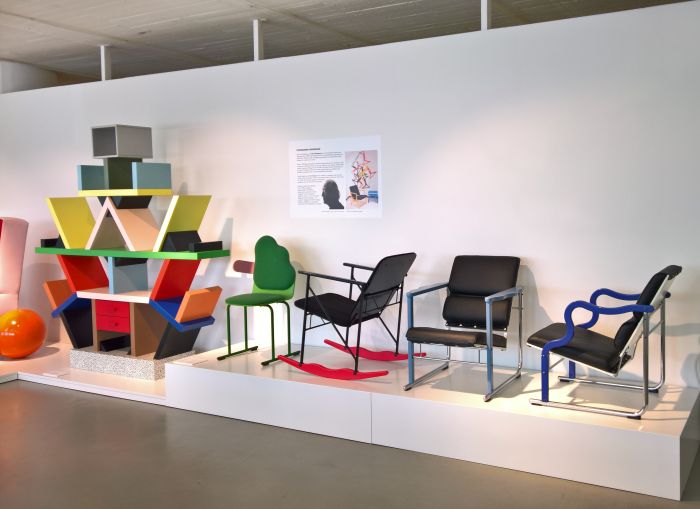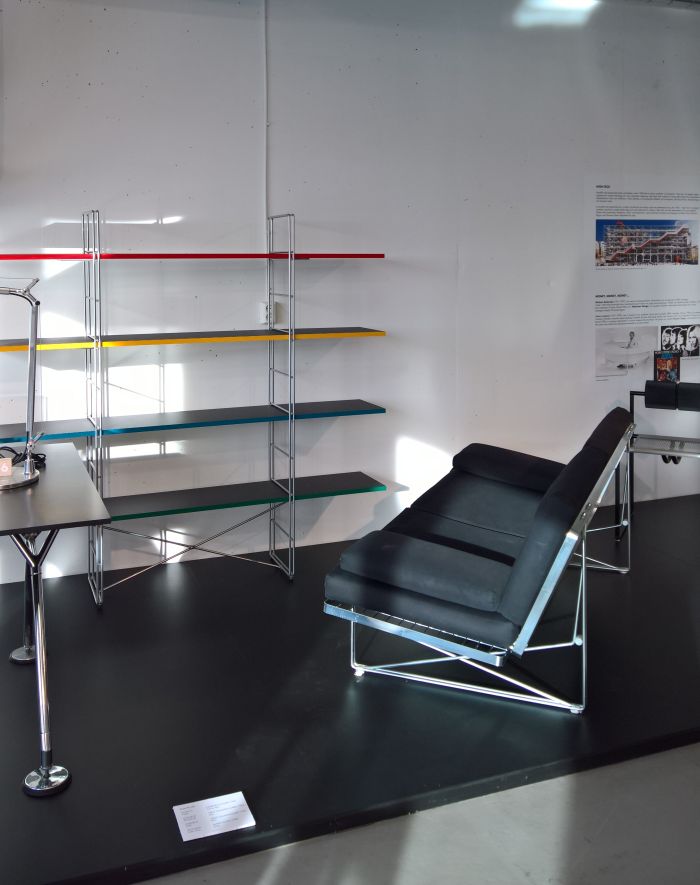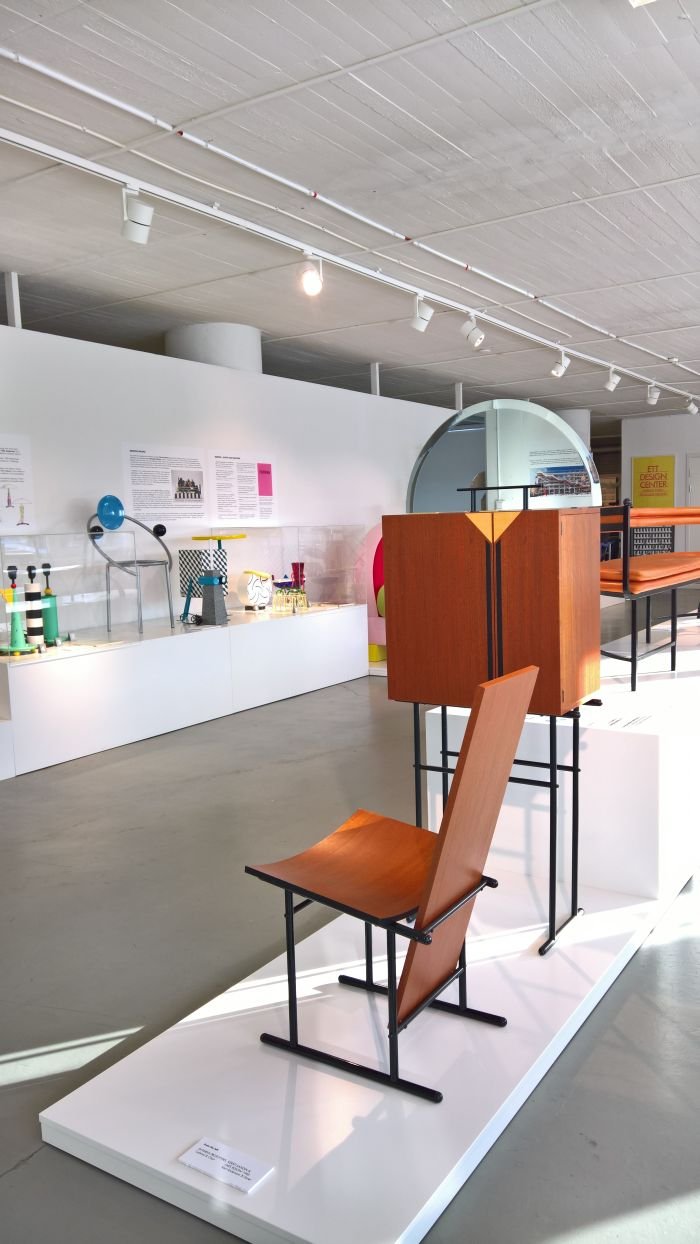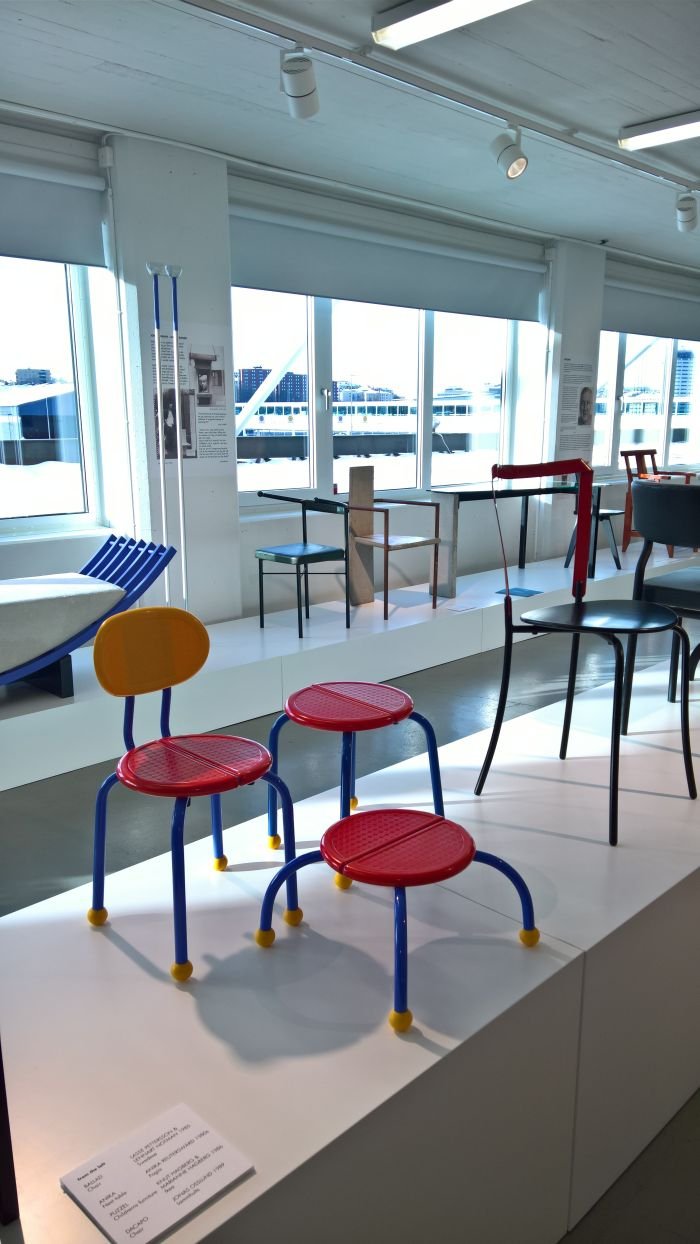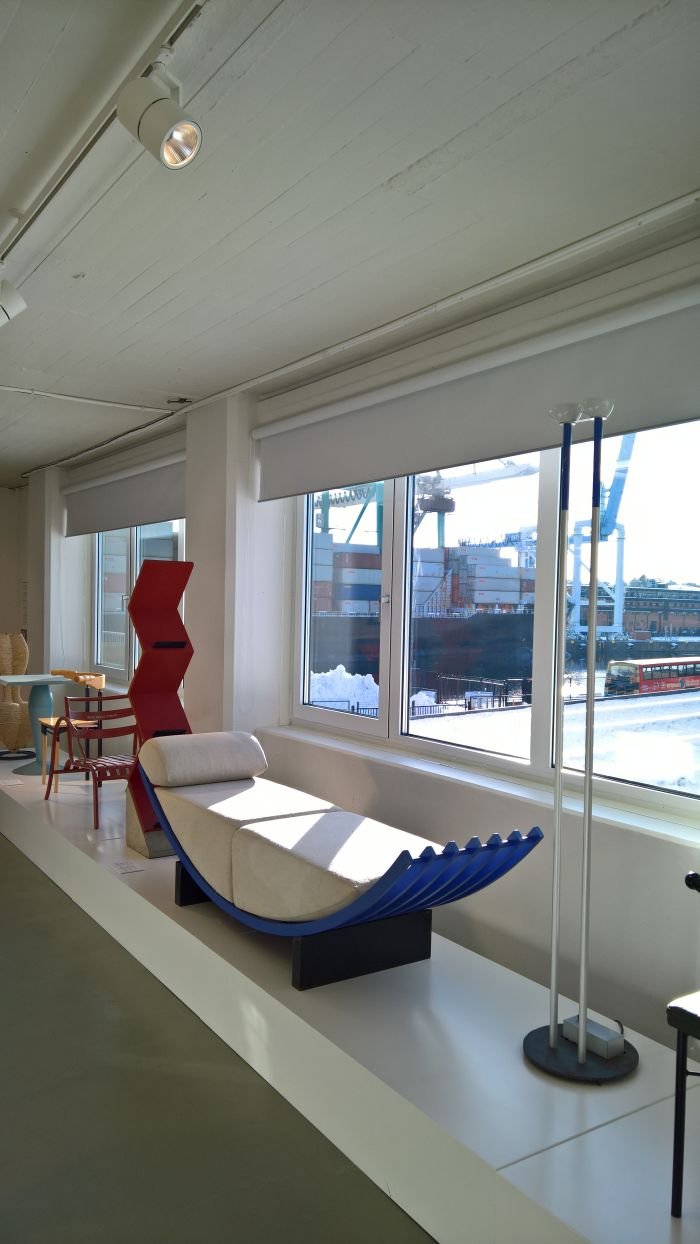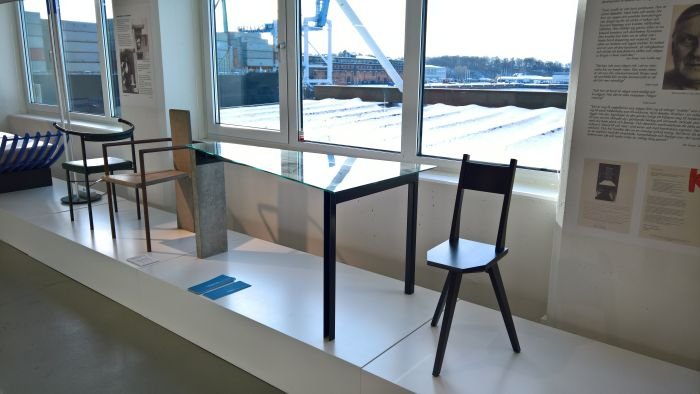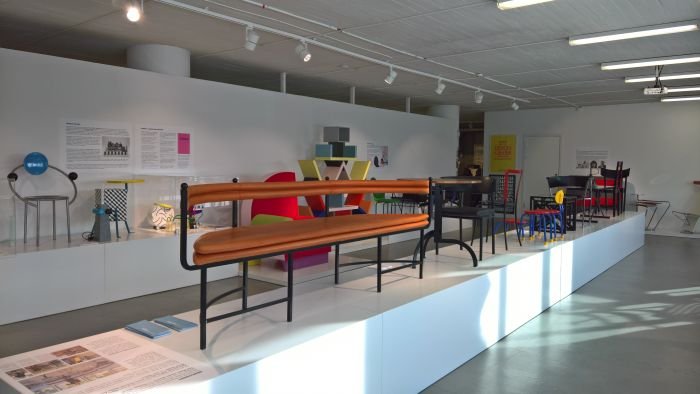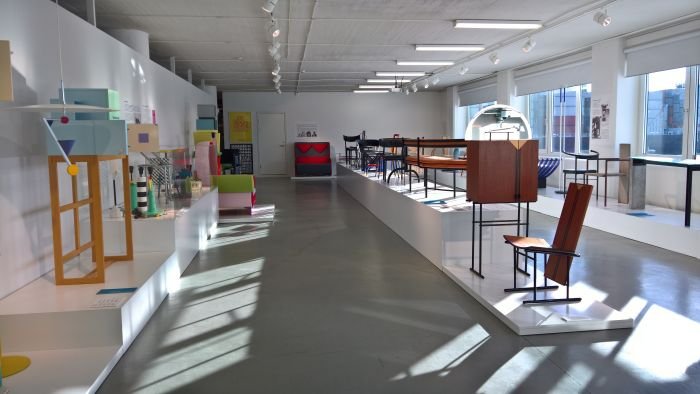No, it's not all shoulder pads and garish colour clashes....... although........
.......much more, with the exhibition 1980s - A new era in furniture design Stockholm's Museum of Furniture Studies explore furniture design in that most politically, culturally, socially and economically fluid of decades, and, and not completely unrelated, a decade which not only brought fundamental changes to understandings of furniture design, but arguably brought more abrupt, more curt, more enduring changes than at any time since the 1920s.
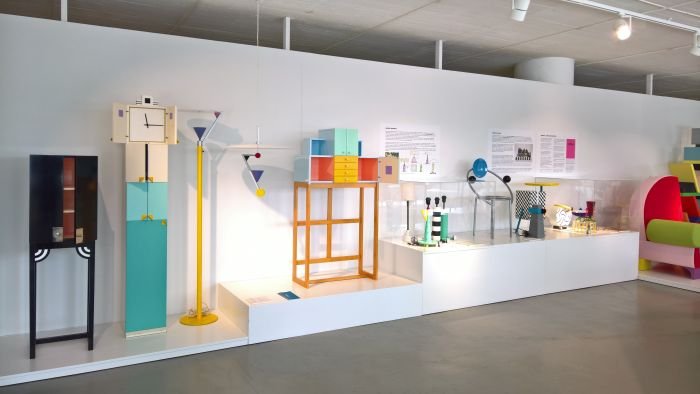
Established in 2018 as a public home for designer Kersti Sandin and Lars Bülow's furniture collection, the Museum of Furniture Studies is intended, as the name implies, as a place for furniture study rather than furniture observation, and consequently is a space where one can get up close and personal with the works; the permanent exhibition of some 500 objects being arranged, more or less, chronologically, on two-tier storage shelving and thus allowing for very direct access.
As a personal collection it isn't one based (necessarily, far less exclusively) on cultural-historic or design history perspectives, but rather on Kersti and Lars' understandings of furniture design, and as such features numerous works and numerous designers one wouldn't normally (expect to) find in a museum collection, including, fairly logically, a very strong Swedish representation. But to the museum itself we will return at a later date, here our focus is their current temporary exhibition.
Following on from Déjà vu - design themes over the ages, which explored recurring themes in furniture design, and Braided & Laced, which focussed on, well, braiding and lacing as techniques in furniture design, with 1980s - A new era in furniture design the museum explores the development of furniture design in the 1980s, for all, though not exclusively, from a Swedish perspective.
Whereby it's important to note that the 1980s represents in many regards the start of Kersti and Lars' professional careers; both graduated in the late 1970s from Konstfack, Stockholm, the pair were, as young designers in their late 20s, in Milan at Salone '81 for the first Memphis exhibition, returning regularly to Milan during that decade, and also taking their first steps in the Swedish design industry during the 1980s, realising their first projects, winning their first awards and developing their networks.
Thus through their experiences of the decade, the fact it was a decade throughout which their design and their understanding of furniture evolved, it is a decade Kersti and Lars can explain with an authenticity, or perhaps better put, and as with the representation of furniture design in the permanent exhibition, is a decade that they can represent with a legitimacy that comes from experience, and that not just of the cultural, social, political and economic influences of period, but of the individuals, companies, publications et al featured in the exhibition. Yes, it's a subjective experience, but then so is arguably all curatorial research.
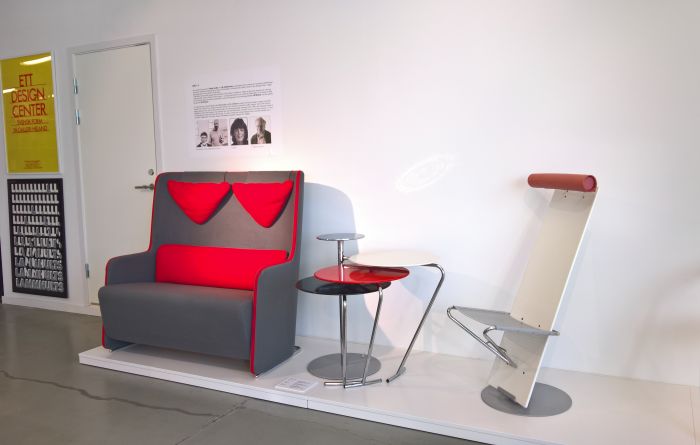
For any given design subject there is rarely a definitive starting point, just points on the helix that are more prominent than others, and in the case of the 1980s one of those points is unquestionably the Memphis Group, as the most visible, and to this day contentious, expression of new understandings of aesthetics, of materials, of value, of functionality being more than a mechanical attribute, of design vocabularies being more than formal; and Memphis is the entry point to 1980s - A new era in furniture design: albeit before one gets to the Milan Memphis of Ettore Sottsass, Michele de Lucchi, Peter Shire et al, one is introduced to the lesser known "Nordic Memphis" as represented through Memphis inspired works by the Swedish architect and designer Olle Anderson for manufacturers such as Boréns or Horreds.
Memphis however is not the only early 1980s impulse to be found in the exhibition, not the only impulse, as it were, that helped launch a new era in furniture design, amongst the others is Jonas Bohlin's chair Concrete, a, well, concrete chair. Bohlin's 1981 Konstfack graduation project we first saw Concrete at the 2018 exhibition INSIDE Architecture at the Konstakademien, Stockholm where we noted that for us it remains a work "every bit as communicative, radical and relevant today as we imagine it was then"; A new era in furniture design helps explain just how much it was, and how it contributed to discussions on form, function, materials, aesthetics, and for all the relationships between such, in early 1980s Sweden. And in doing so allows for a more differentiated view on the (hi)story, the reality, of Swedish furniture design, a view which is neatly expanded through examples of works by designers such as, and amongst others, Lindau & Lindekrantz, John Kandell or Gunilla Allard, and also through the discussions on the role played by manufacturers such as Källemo, Lammhults or Blå Station, the latter, as the exhibition explains, formed in 1986 by designer Börje Lindau as a response to the spirit of liberation and possibility afforded by the new understandings of furniture design, and, arguably, of a need for new channels and platforms to disseminate the new works. And thus very indicative of the emancipation of furniture design, of a new freedom for designers and an opening of the furniture market in the 1980s. An emancipation, freedom and opening from which we benefit today, even if not all choose to make use of them.
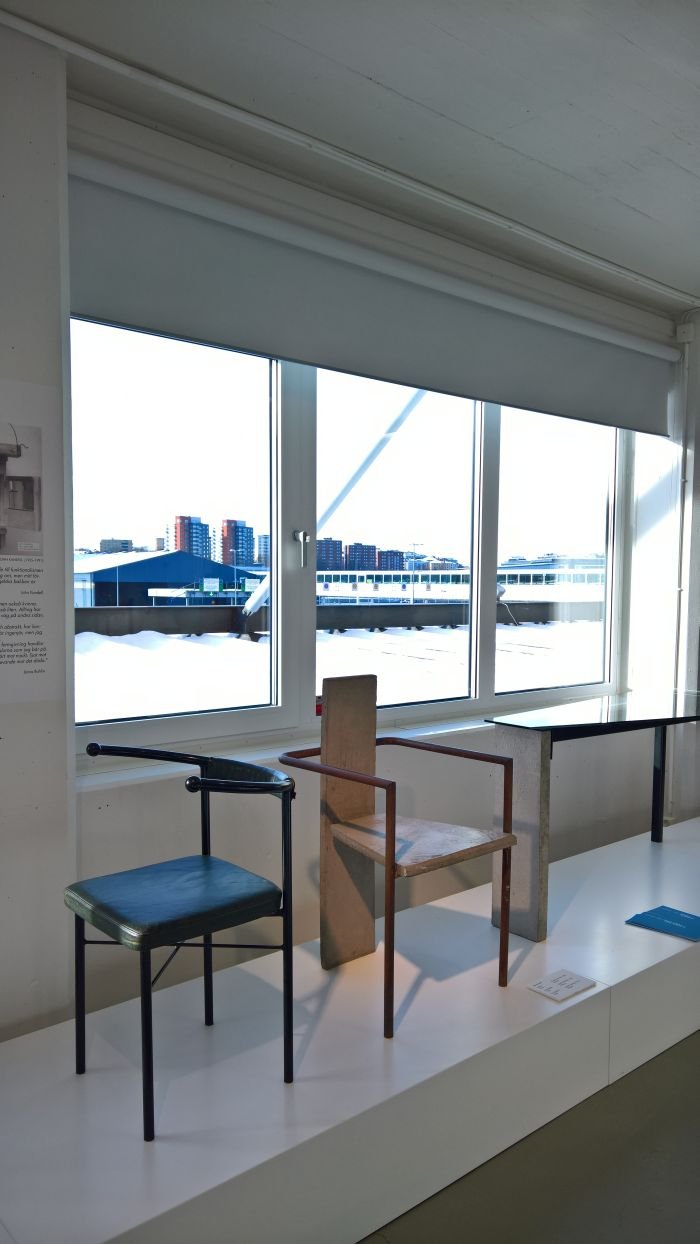
In addition to exploring the situation in Sweden throughout the 1980s A new era in furniture design also sets the developments in a wider international context with works such as, and amongst others, Jasper Morrison's Thinking Man's Chair, Tom Dixon's S Chair and several works by Finnish designer Yrjö Kukkapuro including a rocking chair about which we once wrote that it, "doesn’t have a clue what it is or wants to be, there is so much going on, at times contradictory, that the result is something unbearably loud." Viewing it again in Stockholm we can't help but concur with ourselves. [Update 24.04.2023 Having spent a lot more time with the works and positions of Yrjö Kukkapuro we now distance ourselves from our previous position, we were very wrong, we didn't understand, we're very sorry. For our current thinking please see Yrjö Kukkapuro – Magic Room at Espoo Museum of Modern Art, EMMA]
The exhibition ends, as the 1980s did, with the brashness and rawness of the decade's early years increasingly giving way to a more refined, rational, version of that brashness and rawness, and as represented in A new era in furniture design by, in addition to a collection of objects from Alessi, the Moment bookshelf and sofa by Niels Gammelgaard for IKEA, and thereby objects which, together with other IKEA objects in both the temporary and permanent exhibition, underscore just how important the company was in the development of 20th century design in Sweden. Even if for non-Swedes that can be really difficult to fully comprehend.
But then that's why one visits museums and exhibitions, to learn.
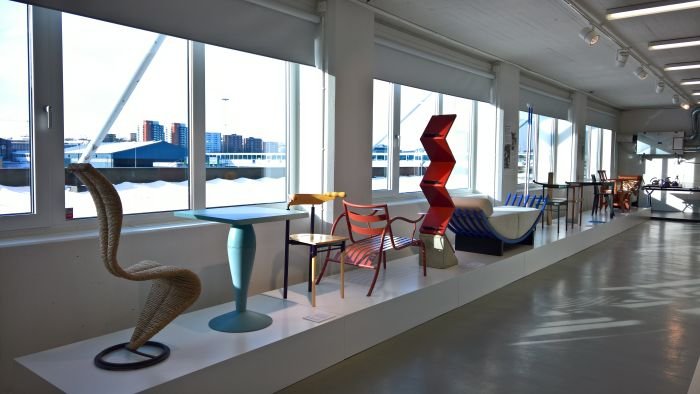
Given the space available within the Museum of Furniture Studies, 1980s - A new era in furniture design can do no more than provide for the briefest of introductions to the period, and that it does very well, for all, and most pleasingly, in a Swedish context; the bilingual Swedish/English texts very nicely setting the scene, introducing designers, manufacturers, networks, et al and thus providing a good basis for all keen to deepen their understanding of the (hi)story of furniture design. Something you probably should do. And something you can immediately start doing in the permanent collection exhibition next door where there are not only examples from the 1970s and 1990s by way of a quick before/after overview, but also a few more 1980s works, including a second example of Yrjö Kukkapuro's rocking chair sat next to a very close relative without the rockers: a rocker-free version that is and was wonderfully subtle, composed and coherent, a genuine joy to behold, and thereby pleasing confirming, at least for us, our belief that "you can’t just hobble the component parts of a chair together and call it a chair"
Or indeed any components of any piece of furniture together. Which is where a lot of confusion often exists about the experimental, convention breaking furniture of the 1980s, that it was just random connections of more or less identifiable elements into more or less identifiable objects. That wouldn't have worked. As Kukkapuro neatly exemplifies. As an exhibition 1980s - A new era in furniture design helps explain how and why the furniture of the decade did work, how it related to the wider developments of the period, how the 1980s relates to contemporary Swedish furniture design and why one should always look beyond the superficiality of the shoulder pads and garish colour clashes of the period.....
1980s - A new era in furniture design can be viewed at the Museum of Furniture Studies, Magasin 6, Frihamnsgatan 50, (Frihamnen Harbour), Stockholm until Sunday September 1st. Although the Museum is only formally open on Wednesdays, group and private tours on other days are available on request.
Full details can be found at www.mobeldesignmuseum.se
